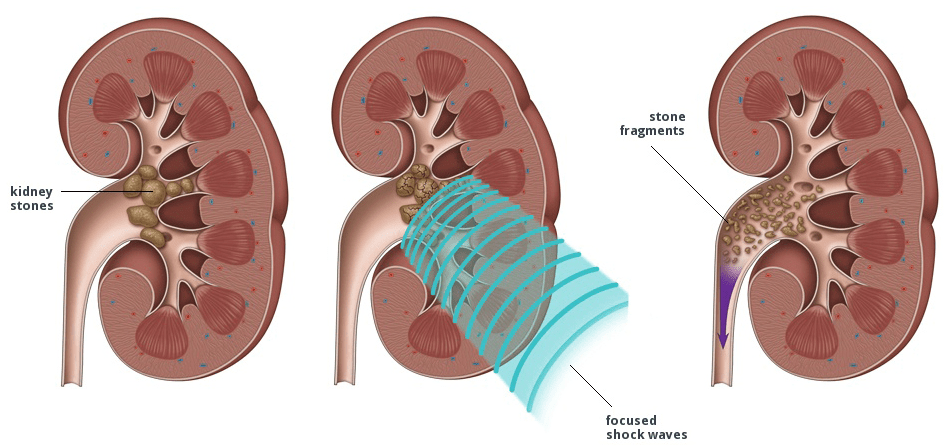Long-Term Services and Supports Measures and Dashboard Data California Health and Human Services Open Data Portal
Table of Content
The government contributes an additional 5% to the regulator's fund. The remaining 45% is collected as premiums paid by the insured directly to the insurance company. Some employers negotiate bulk deals with health insurers and some even pay the employees' premiums as an employment benefit. The regulator has sight of the claims made by policyholders and therefore can redistribute the funds its holds on the basis of relative claims made by policy holders. Thus insurers with high payouts receive more from the regulator than those with low payouts. Insurance companies have no incentive to deter high-cost individuals from taking insurance and are compensated if they have to pay out more than might be expected.

In addition to Medicare, there is a separate Pharmaceutical Benefits Scheme, funded by the federal government, which substantially subsidises a range of prescription medications. In 1993 a reform transformed the health care system in Colombia, trying to provide a better, sustainable, health care system and to reach every Colombian citizen. NHS Scotland, created by the National Health Service Act 1947, was also launched on July 5, 1948, although it has always been a separate organization. Since devolution, NHS Scotland has followed the policies and priorities of the Scottish Government, including the phasing out of all prescription charges by 2011.
Journal of long term home health care : The PRIDE Institute journal, The
In 1941, Costa Rica established Caja Costarricense de Seguro Social , a social security insurance system for wage-earning workers. Further expansions during the late 1970s extended insurance coverage to farmers, peasants, and independent contract workers. Additionally, CCSS mandates free health service provision to mothers, children, indigenous people, the elderly, and people living with disabilities, regardless of insurance coverage. By 2000, 82 percent of the population was eligible for CCSS, which has continued to expand in the ensuing period. By covering all population groups through the same system, Costa Rica has avoided social insurance stratification and inequity common in many other countries in the region. The system is for the most part publicly funded, yet most of the services are provided by private enterprises or private corporations, although most hospitals are public.
Beyond the pandemic, we will have to transform the way we pay for and provide long-term care. First, we believe that Medicaid programs need to invest considerably more in care in all settings. As Medicaid has shifted long-term care into homes, funding has not kept up with that trend, meaning that more is demanded of families, who are often responsible for providing informal, unpaid care. An adult child who cares for an aging parent will face losses equivalent to $100,000 a year, on average4 — roughly the same cost as a nursing-home stay. Policies that prioritize home-based care should ensure that it’s paid for, whether it’s provided by family members or professionals. Many families have wanted to provide care at home even before Covid-19, and after the pandemic many more may choose to do so if they can afford it.
Publication Fees
While the CMS directives obstructed residents’ liberties, they also contradicted the Assisted Living Facility social model, which places autonomy and independence at the forefront. Hospitalisation is free for permanent residents in both nations. In addition, Australia grants primary care coverage, while in New Zealand general practice and prescriptions are subsidised only. Health care in Chile is provided by the government and by private insurers .

Public health officials assert the common good and protecting the public’s safety and health justify paternalism and compulsory powers. One counterargument is that the compulsory interventions or restrictions push paternalism to new levels. In 2017, the American Association of Retired Persons reported that social isolation accounted for $6.7 billion in additional Medicare spending although only 14 percent of older adults in the US reported being socially isolated. Approximately 24 percent of community-dwelling older adults in the US are socially isolated. Forty-three percent of adults aged 60 and older report feeling lonely.
Other related documents
This means that the residents can get meal preparation, help moving around and other daily assistance as necessary. At the same time, states have been shifting Medicaid-funded care into people’s homes, partially in response to a U.S. Requiring that care be provided in the least restrictive setting possible. Since 2013, Medicaid has shifted a larger share of care into homes and out of nursing homes, even as it continues to underfund care in both settings. Furthermore, Medicare and Medicaid were never intended to pay for the lion’s share of long-term care. Medicare funds long-term care only temporarily and tangentially by covering nursing home–based rehabilitation after a hospital discharge.

The New Rural Co-operative Medical Care System from 2005, aimed at the rural poor, sets the annual cost of medical coverage at 50 yuan (US$7) per person. As of September 2007, around 80% of the whole rural population of China had signed up . For patients who go to a small hospital or clinic in their local town, the scheme covers from 70 to 80% of their bill; patients at a county provider get 60% if their cost covered; and in a large modern city hospital, the scheme covers about 30% of the bill. Morocco operates a public health sector run by the government that operates 85% of the country's hospital beds. It deals mainly with the poor and rural populations, who cannot afford private healthcare.
Study: Aging is driven by unbalanced genes
Public health care became universal healthcare on January 1, 2020, mandated by the new President Andrés Manuel López Obrador and approved by Congress. It is completely free for Mexican citizens who do not have health insurance. Mexico's new universal healthcare, administered by the Instituto de Salud para el Bienestar , includes free consultations with family doctors and specialists, free medications, free surgeries, free dental and vision.
All workers and pensioners are mandated to pay 7% of their income for health care insurance . Workers who choose not to join an Isapre, are automatically covered by Fonasa. Fonasa also covers unemployed people receiving unemployment benefits, uninsured pregnant women, insured worker's dependant family, people with mental or physical disabilities and people who are considered poor or indigent. The universal health care system was adopted in Brazil in 1988 after the end of the military dictatorship. Payroll taxes of 12.5% of a person's gross income (5% by the employee and 7.5% by the employer) fund 97% of the program. The United Arab Emirates has universal healthcare, with healthcare provided for all nationals and mandatory health insurance for citizens of other countries.
At the high end, it might involve helping someone with bathing, dressing themselves and moving around the house. Covid-19 has exposed the cracks in our tenuous system of providing and funding long-term care, and there are no easy fixes. But we believe we are well past due for comprehensive policies that take the care of aging Americans seriously and fund it accordingly and in a wider range of settings. Voices in Bioethicsapplies a strong process of editing and peer review to produce academic pieces with novel arguments while encouraging students pursuing an MS in bioethics at Columbia University to engage in the research process. As always,Voices in Bioethics will publish works by leaders in the bioethics field as well as those with perspectives from fields outside of medical ethics and outside the sciences. It is difficult to predict how much or what type of long-term care a person might need.

Public health officials identified long-term care residents as most likely to require significant medical resources. One talking point repeatedly broadcast was the need to prevent the depletion of hospital beds, ventilators, medications, and supplies. Most assisted-living facilities are for-profit, and residents pay for their food, shelter, and personal needs. What does society owe these long-term care residents in return for the liberty they sacrificed for the benefit of society at large?
And the best way to make those plans is with professional help, which can be provided by a financial advisor. SmartAsset’s free tool matches you with up to three vetted financial advisors who serve your area, and you can interview your advisor matches at no cost to decide which one is right for you. If you’re ready to find an advisor who can help you achieve your financial goals, get started now. In essence, long-term care is about helping someone with their day-to-day routine. The details can range widely depending on how much help a person needs. For example, at the low end this might involve shopping, housekeeping and providing meals for someone who has difficulty getting to the store.
But with COVID-19 older adults were an identified high-risk population because of their susceptibility to infection and severe illness. During the early phases of the pandemic, the directives were reasonable to accomplish the purpose of preventing the spread in the identified high-risk population. They were not discriminatory according to the rule of law in Jew Ho. The primary legal issue stems from the conflict between individual liberty and the public good or health. Jacobson v. Massachusetts provides a framework for balancing individual liberty rights and the public good during a pandemic. Jacobson clarified an essential point of law - the rights and liberties secured by the US Constitution are not absolute.
Residential Facilities, Assisted Living, and Nursing Homes
The county determines eligibility for the program, and the LDSS authorizes all services that are provided. They should be arranged alphabetically under author name and then in chronological order if several papers by the same author are cited. The full title of the paper must be given together with the first and last page numbers. Book titles should be followed by the place of publication and the publisher.
Transportation services help people get to and from medical appointments, shopping centers, and other places in the community. Some senior housing complexes and community groups offer transportation services. Many public transit agencies have services for people with disabilities. Friendly visitor/companion services are usually staffed by volunteers who regularly pay short visits to someone who is frail or living alone. The users of Scimago Journal & Country Rank have the possibility to dialogue through comments linked to a specific journal.

Comments
Post a Comment